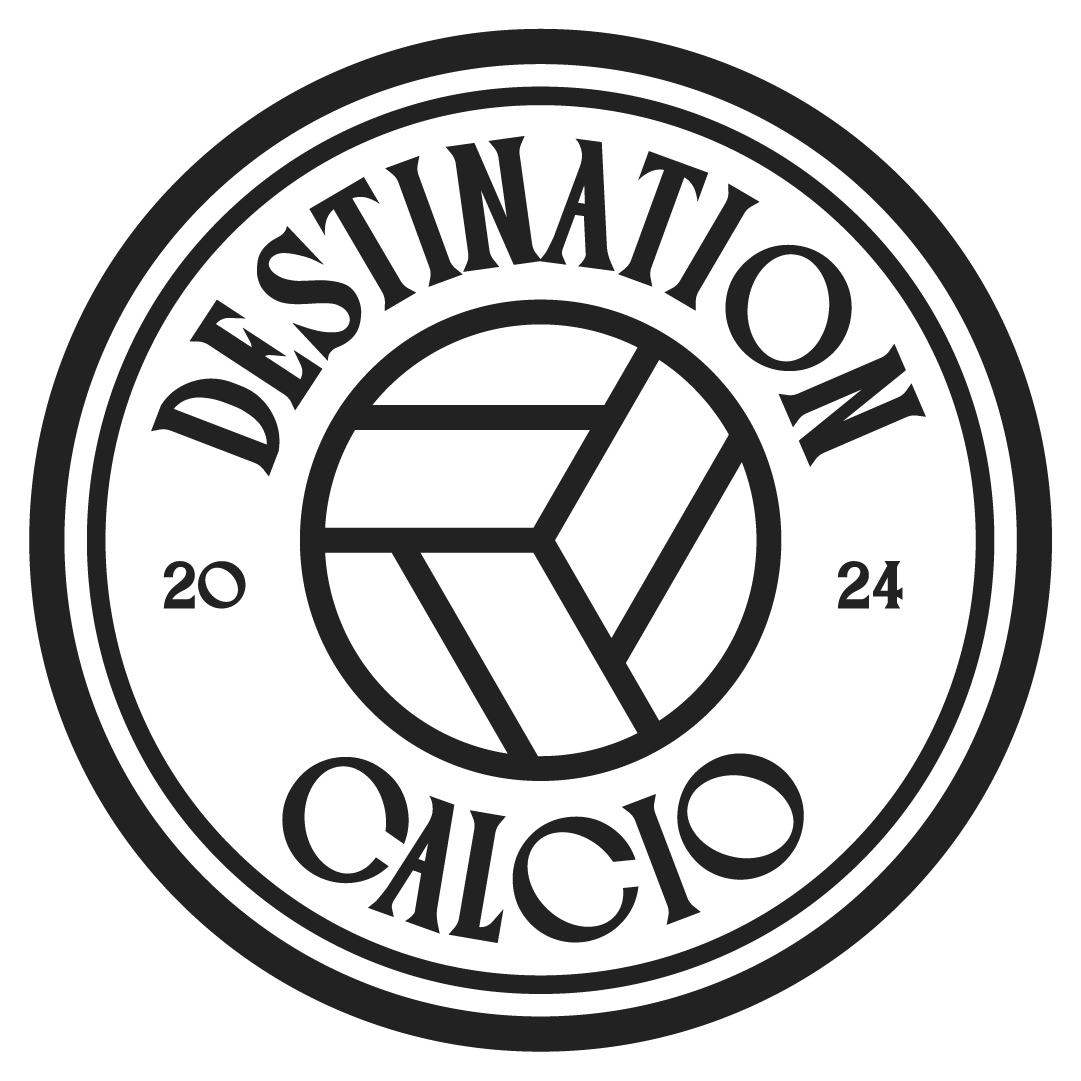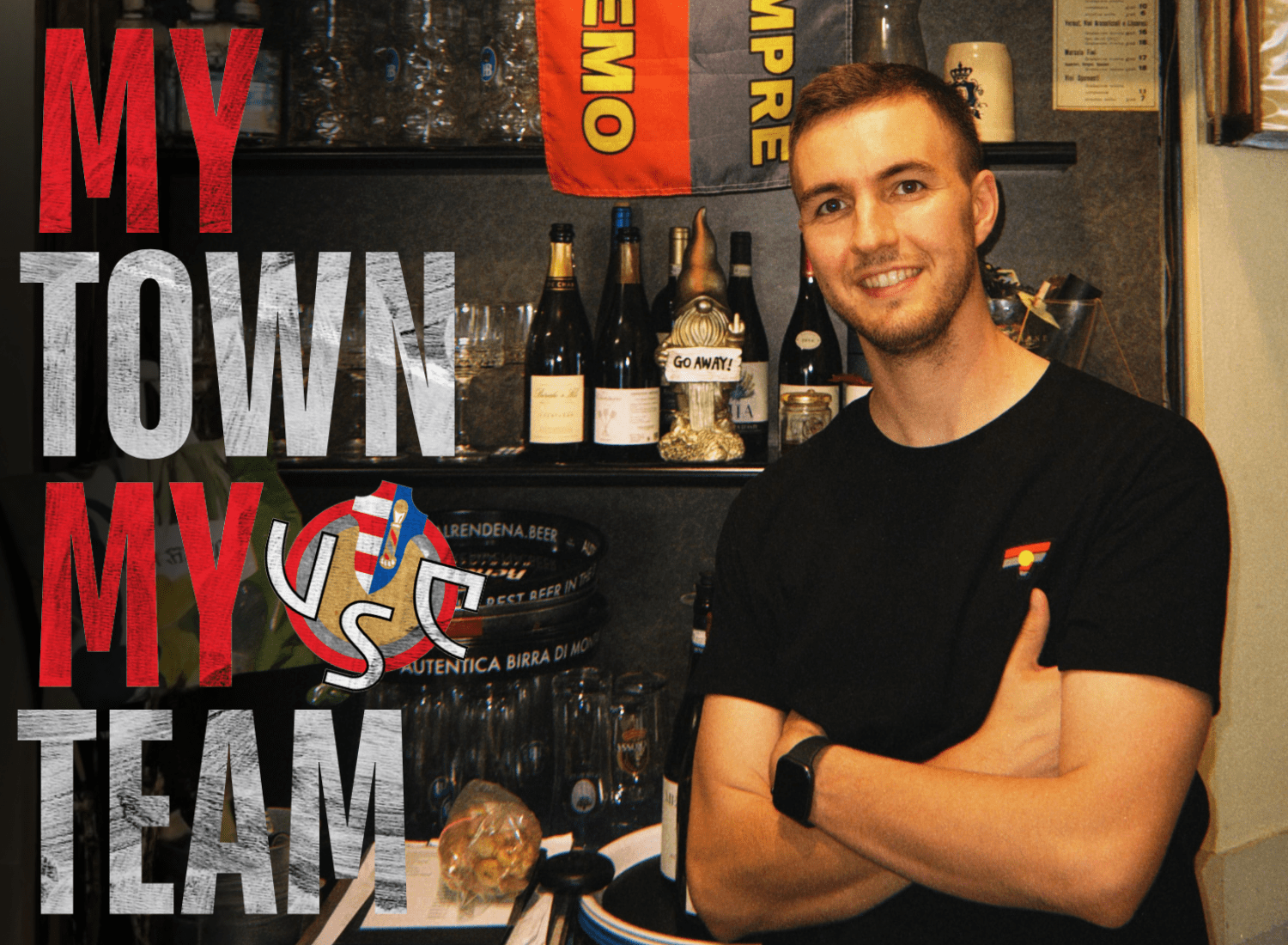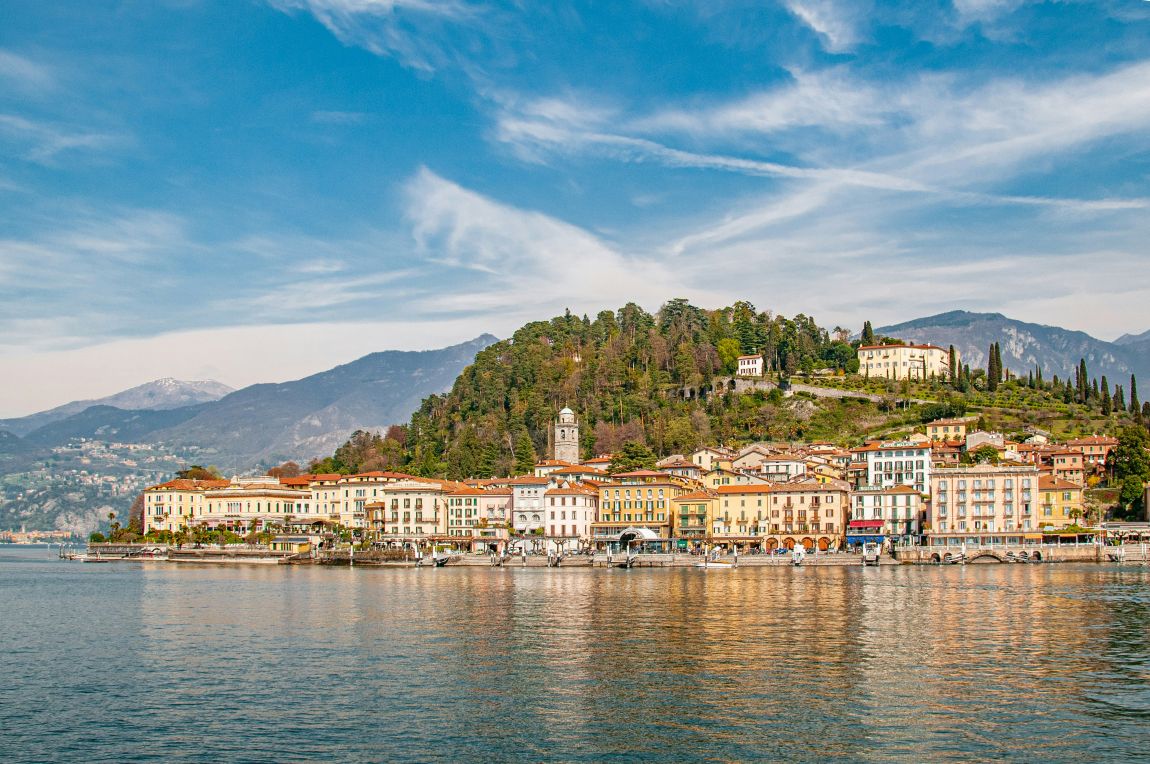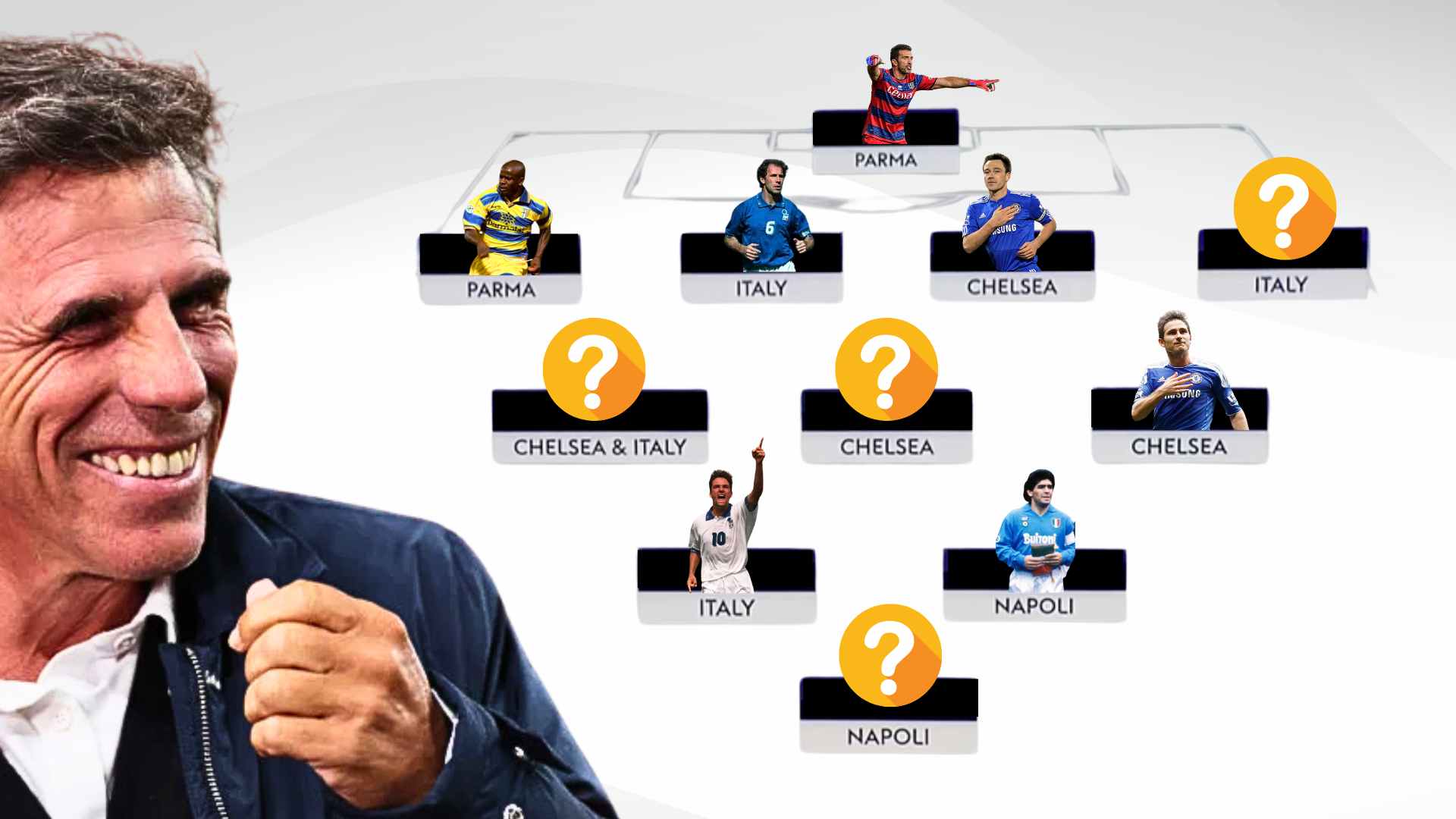
Buffon, Baresi, Baggio: Gianfranco Zola Regales Tales of the Greats as he Names His Best Teammates XI
Gianfranco Zola, the trailblazing playmaker from the mountains of Eastern Sardinia with a unique football journey like no other.
The “Little Magician” made over 800 appearances for club and country during an epic playing career that spanned 20 years, scoring 248 goals and assisting an additional 83.
In his homeland, Zola won a wide range of trophies, beginning with the fourth division at Sassari Torres, the Scudetto with Napoli, and he tasted UEFA success for the first time at Parma. In England, the 58-year-old is best remembered as one of the Premier League’s greatest-ever imports, revered for taking Chelsea to English FA Cup titles and European glory.
With a legacy like this, Jamie Carragher and Sky Sports’ Monday Night Football took the opportunity to highlight Zola’s career, showcasing his Best Teammates XI.

Some of the team selects itself – from Frank Lampard to Franco Baresi – and nobody can dispute the majority of the side. It features world-topping talents from each era of his career. However, some inclusions raised eyebrows across social media platforms and sparked debate on the Calcio FC podcast. Here’s the side:
The Gianfranco Zola Best Teammates XI: Gianluigi Buffon (Parma), Lillian Thuram (Parma), Franco Baresi (Italy), John Terry (Chelsea), Dennis Wise (Chelsea), Roberto Di Matteo (Chelsea), Frank Lampard (Chelsea), Careca (Napoli), Roberto Baggio (Italy), Diego Maradona (Napoli).
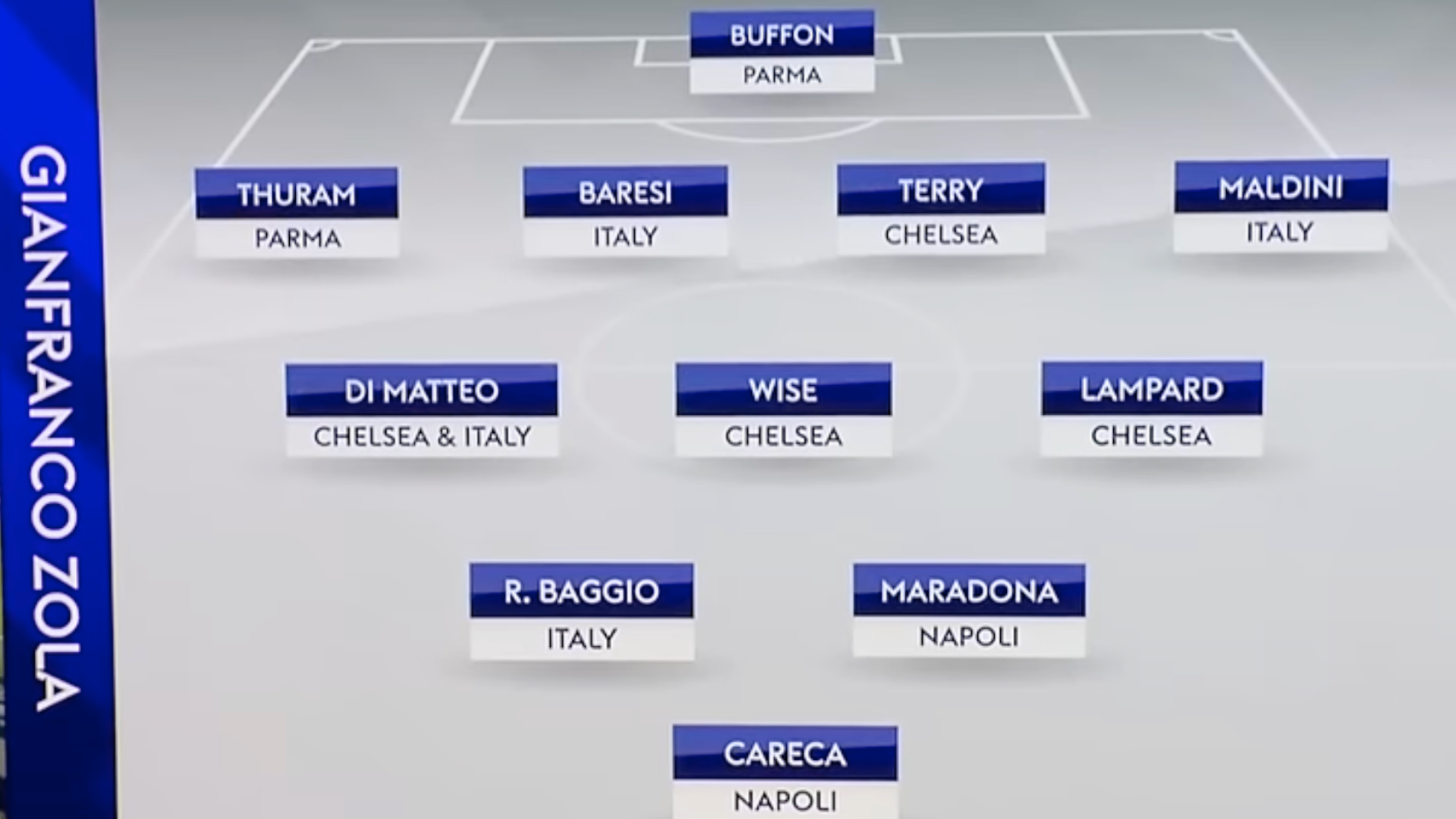
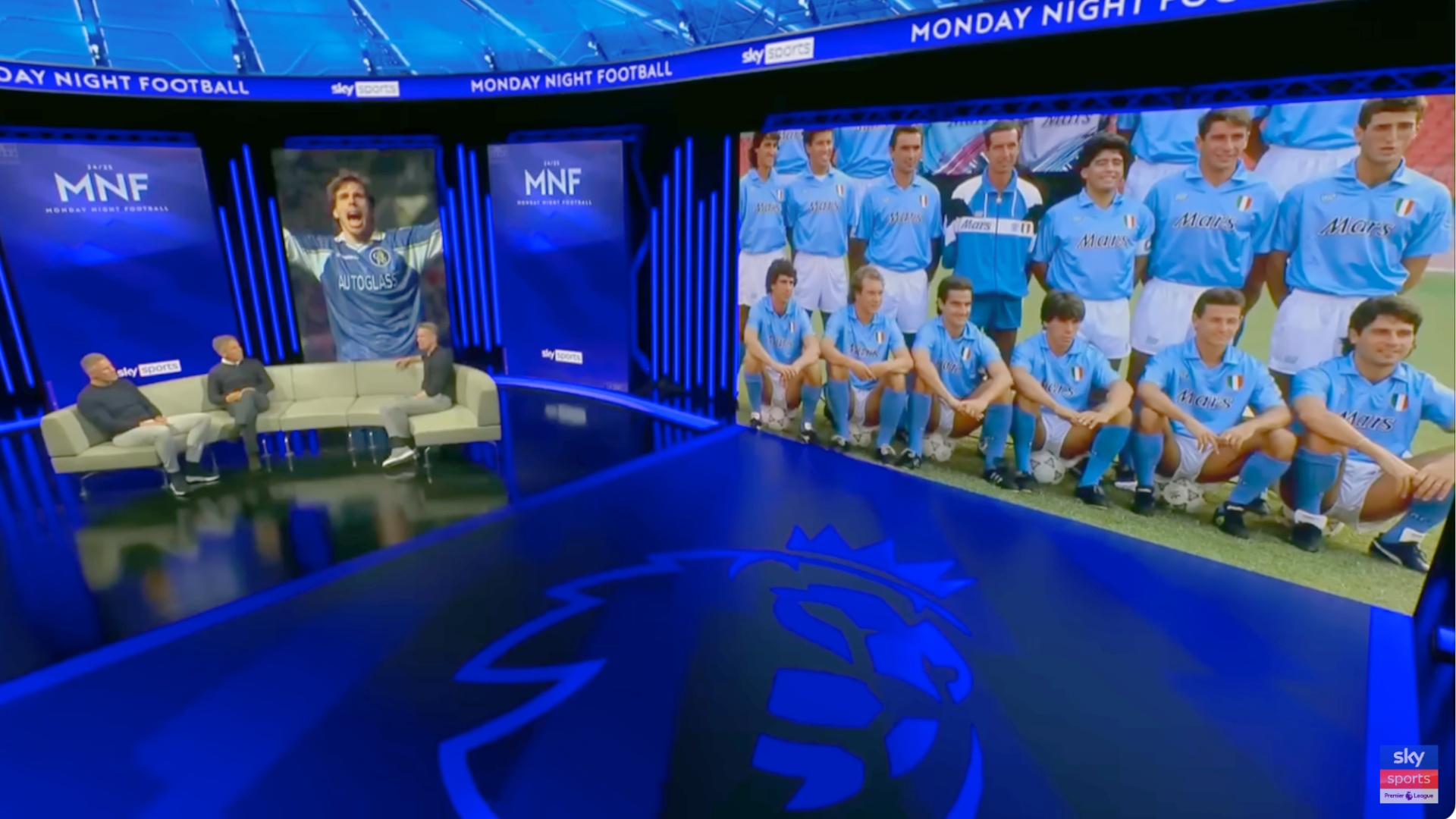
With Zola’s 4-3-2-1 formation revealed, the hosts promptly invoked Maradona’s name.
Of his four-year spell in Naples, only Zola’s first was spent with the great Argentine – the 1989-90 Serie A title-winning season – before the latter departed following a temporary ban from football. But Zola had signed from Sassari Torres the previous summer, ample time to get to know the best player the ’80s ever saw.
“Diego,” Zola sighs, deep in thought. “Diego was an incredible player. Everything he used to do – even in training – was amazing. I can not remember how many times we stopped training and we started clapping because he was doing something that, seriously, nobody [else] was able to do.”
Only the likes of former England goalkeeper Peter Shilton could disagree with Maradona’s inclusion, and the following statement about the 1986 World Cup-winning captain.
“He was very humble. He was always available to everyone,” Zola explained before sharing a story about how El Dios lobbied Napoli owner Corrado Ferlaino to pay out the team bonuses typically excluded from modest contracts like his.
Maradona’s departure ensured Zola would play regularly over the next few seasons, and he duly terrorised goalkeepers throughout Serie A with impressive finishing and those free kicks he’d perfected while practising with El Pibe De Oro at training.
Another Napoli champion, Brazilian striker Careca, was also named by Zola in his Best Teammates XI, a controversial selection for some considering the Italian shared the field with Faustino Asprilla, Gianluca Vialli and Christian Vieri.
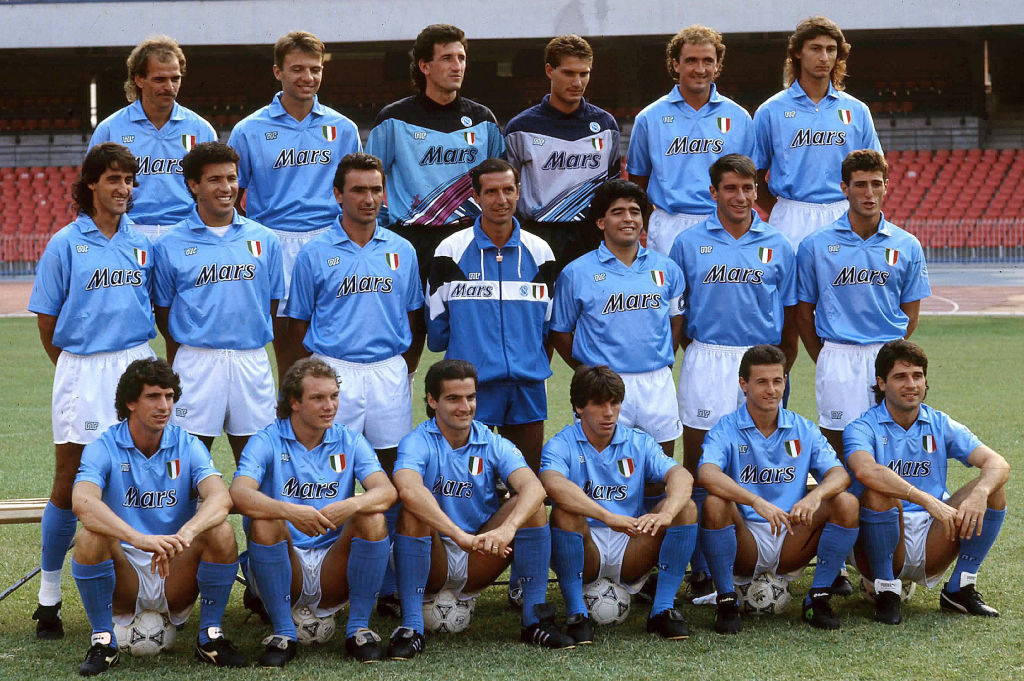
Zola contributed with three goals during the Partenopei’s title-winning season, and he and Careca each scored in the 3-1 victory over Atalanta at the then-Stadio San Paolo, later renamed the Stadio Diego Armando Maradona in 2020.
“You really needed to work a lot, especially in those years,” Zola explained. “There is a lot you need to learn to be competitive with those guys. I dedicated all my life to that.”
Carragher then reminded Zola of the all-conquering AC Milan team, a side filled with superstars humble enough to see Maradona as a demigod.
“We were in the dugout, just about to go on [against Milan] and I see Ruud Gullit and Van Basten going to ask him if he [Maradona] was going to change shirts, before the match. I mean, Van Basten, Gullit, two amazing players – they went to him. That shows how appreciated Diego was and the stature of the player.”
There’d be no protests had Zola included himself in his own XI, but this is a Best Teammates selection, and the final component of the three-man attack is Roberto Baggio. No complaints here.
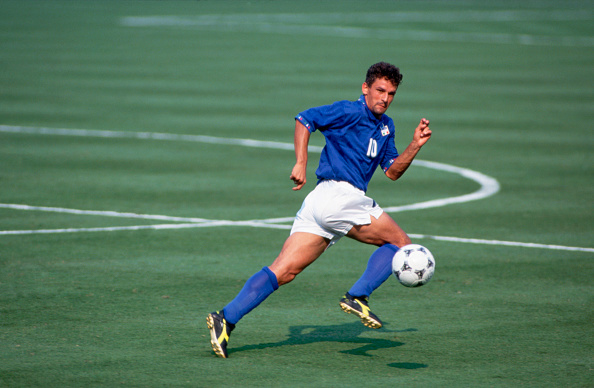
Baggio and Zola were selected in Arrigo Sacchi’s Italian squad for USA ’94, with both suffering from recurring nightmares long after.
“He didn’t start well to be honest,” Zola said of Baggio’s World Cup group stage. “He was very quiet until the game we played against Nigeria. I think he was feeling the pressure. The whole team wasn’t playing fantastically well.”
Italy, after squeezing into the second round, then found themselves 1-0 behind, with ten men, against the unfancied Nigerians in searing conditions at Foxboro Stadium.
“Then, we play Nigeria,” Zola continued. “Another Italian came on (referring to himself), he was on the pitch for seven minutes, and then he got sent off.“
“We were back in 10 [men] and one goal down. And then right towards the end, Roberto got the equaliser, then he got the goal, (the) penalty.”
“From that moment, he was a different Roberto. He played well, he was effective, he was good, and I think in the end, if we had won the tournament then, probably, he would have been called the Player of the Tournament.”
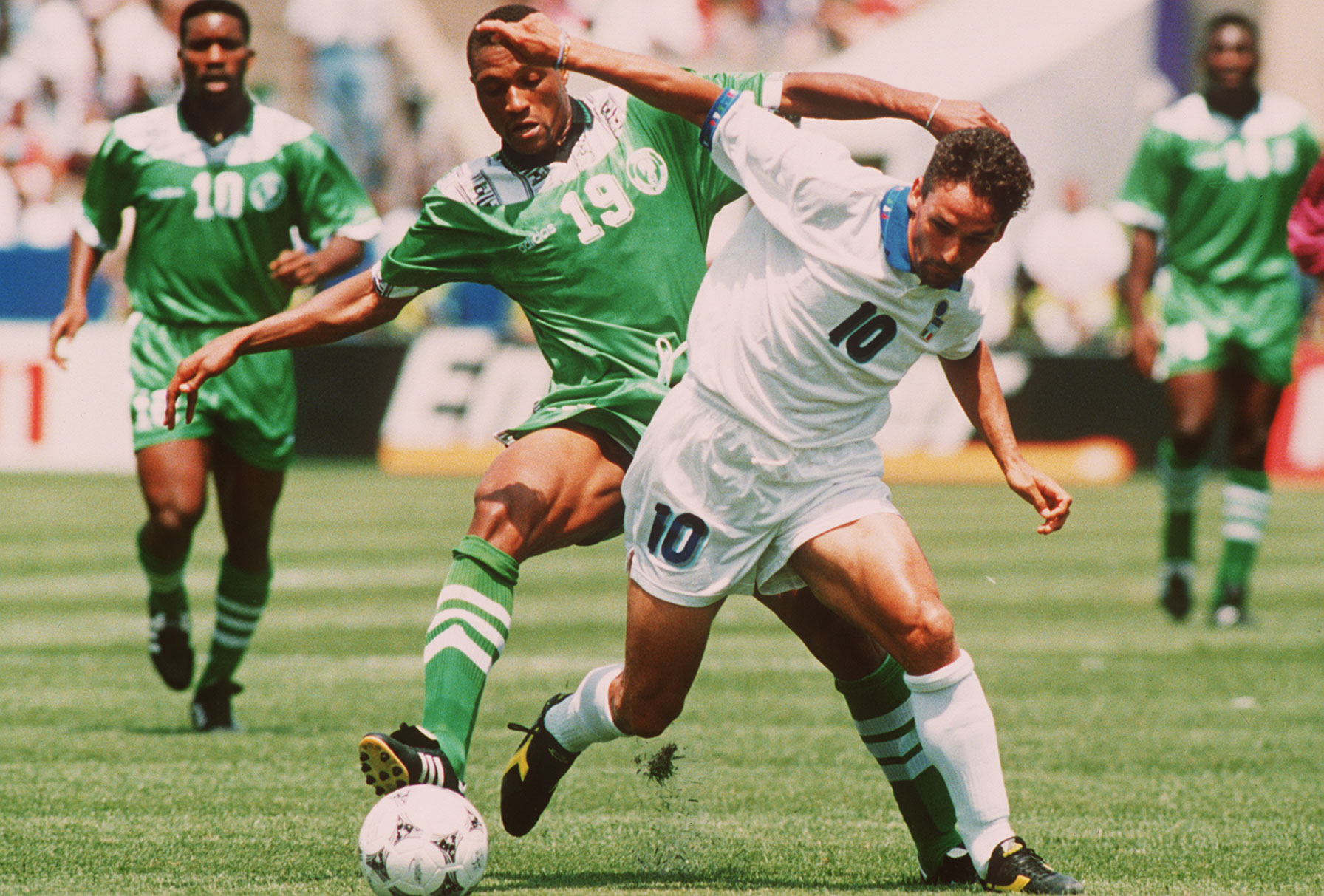
Baggio scored five goals to drag Italy almost single-handedly into the final against Brazil. It was the first World Cup Final decided from the spot, with Zola watching from the bench as Baggio’s attempt cleared the crossbar, a carbon copy of the first Italian penalty taken by Franco Baresi.
For both Zola and Baresi, it would be the last time they’d take part in a World Cup. But there was something about the illustrious Milan defender that resonated.
“Franco was a mix – he was very intelligent, first of all,” Zola remarked. “Nasty when he needed to be, quick, and tactically, he was on a different level. He was always in the right position at the right time, and a great leader – didn’t talk too much. He was one of those silent leaders but was always doing the right thing for everybody.”
Another Azzurri defender, Paolo Maldini, was selected alongside Parma fullback Lillian Thuram and Chelsea centre-half John Terry in Zola’s four-man defence, with the latter a hot topic of discussion for the Calcio FC crew. After all, the tiny Sardinian won silverware alongside Fabio Cannavaro, Luigi Apolloni and Marcel Desailly.
In goal, Gianluigi Buffon outclassed Gianluca Pagliuca, Ed de Goey and Luca Marchegiani to clinch his place in Zola-land, and is one of two Parma players in the XI.
“I think performance-wise, especially in my second year at Parma, I was at my top,” Zola admitted before naming some of the Gialloblu stars of the past.
“Asprilla, Thomas Brolin. Thuram and Cannavaro came later. Minotti, Apolloni, (and) Benarrivo was another national team player. So, we had a very, very good team.”
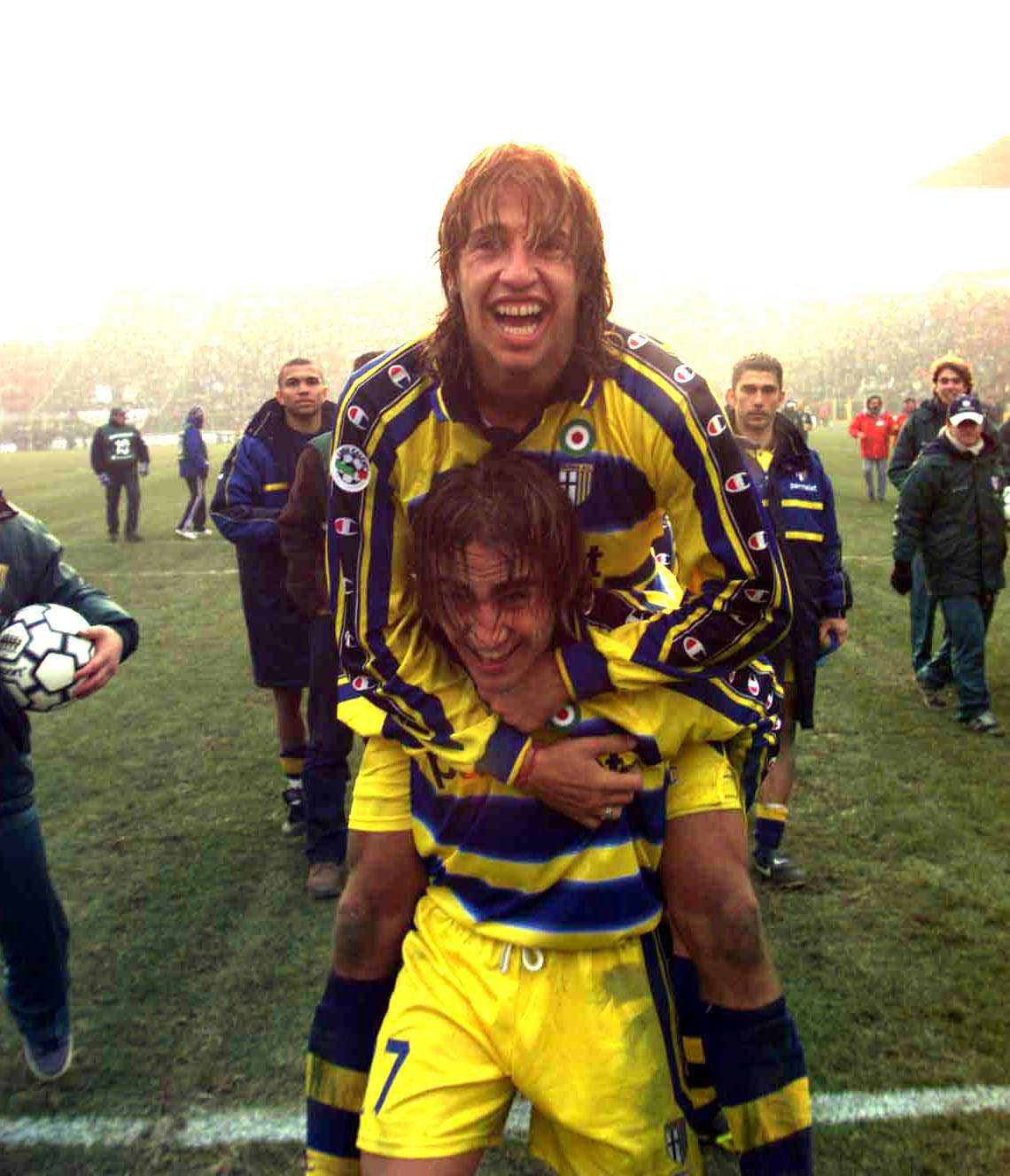
Italy’s inglorious exit at Euro 1996 meant Zola wanted a new challenge. Chelsea came knocking, and after 64 goals and one Capocannoniere award (28 goals in 1994-95) at Parma, Zola moved to the Premier League for £4.5million, joining Vialli at Stamford Bridge.
Zola’s preferred midfield contains three of his closest allies from his seven years in London: Roberto Di Matteo, Dennis Wise and Frank Lampard.
“The mentality of the English made it much easier,” Zola said in regard to his assimilation into British life. “I think they embraced what we were bringing to the club.
“I certainly became a better player from the experience and I’m not joking about that.”
Zola claims that he and Vialli, Pierluigi Casiraghi and other foreign footballers adopted many of the local customs, and enjoyed the new challenge of learning a new culture.
Under former boss Ruud Gullit, Zola’s Chelsea won their first trophy for 26 years, clinching the 1996-97 FA Cup after a 2-0 victory over Fabrizio Ravanelli and Gianluca Festa’s Middlesbrough.
“We had a fantastic group,” Zola asserted. “We felt like we were growing every year. We were getting better and better. There was a big gap to fill with the top clubs – United, Arsenal, Liverpool – but we felt like we were going in the right direction.”
Chelsea almost did the unthinkable in 1998-99, but were beaten to the Premier League title after fading late in the campaign.
“I felt like that year we could have done it. We were very unlucky. Gigi Casiraghi was the part of the team, he got injured. So, in the end, we had one striker less and we played many games. We had to always play the same players and we suffered from that. I remember we came four points behind United who won the league.”
Zola then took his six winner’s medals – the most he collected at a single club in his career – back to Italy in 2003 when he traded west London for west Cagliari.
Committing to a longstanding agreement with the then-Serie B club, he would immediately hoist the Casteddu back to the top flight, capping off a circular ‘calcio-football-calcio’ journey that began and ended on Sardinian sands.
Throughout his twenty-year tenure as one of the game’s most creative and brilliant playmakers, hundreds of Premier League and Serie A legends were fortunate enough to meet and compete alongside Zola. As a result, dozens of iconic names were left out of the Best Teammates XI. Some received honourable mentions.
“I was very lucky to play along with fantastic players,” Zola concluded. “There are players like Albertini who played in the national team, (Roberto) Donadoni, amazing players. But I think it’s a decent team.”
Do you agree with Zola’s Best Teammates XI? Find out what the Calcio FC guys think:
Related Articles
Related Articles
We get a local take on what's hot in Cremona - where to eat and drink, sights to see and handy hints that might not be in the tourist guides.
The Artemio Franchi will always be the main reason calcio fans head to Florence but there is one other thing that must be on the to-do list.
After the final whistle is blown at Stadio Giuseppe Sinigaglia, there is no better place to unwind than Bellagio.
